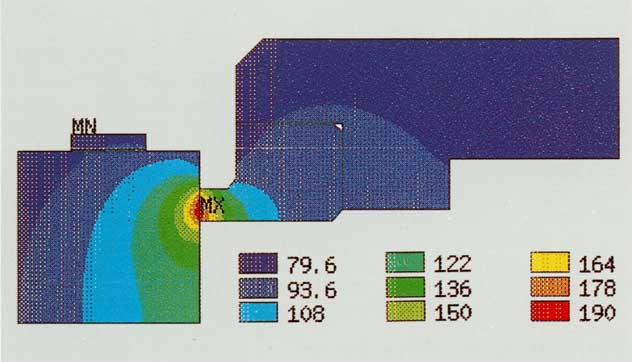| Temperature gradient | ||
The frictional heat
resulting from power consumption varies in its
concentration across the radial curve of the sealing gap.
The rate of frictional heat transfer to the media
(surrounding the mechanical seals) also varies. The results are radial ( |
The greatest temperature gradients arise in the
non-stationary mode (during start-up, shut-down and changes of load). The higher the
thermal conductivity of the face materials, the lower the temperature gradients and hence
the thermal stresses along with their effects, i. e. changes of sealing
gap form. If the fringe conditions are known, it is possible to calculate the
temperature fields by finite element analysis and to
optimize the seal face and stationary seat. |
|
Temperature fields of a high-duty mechanical seal |
||